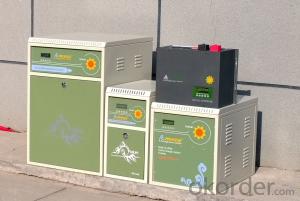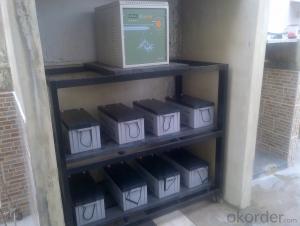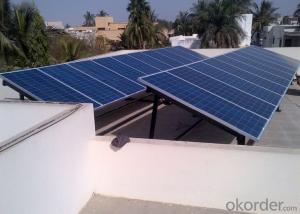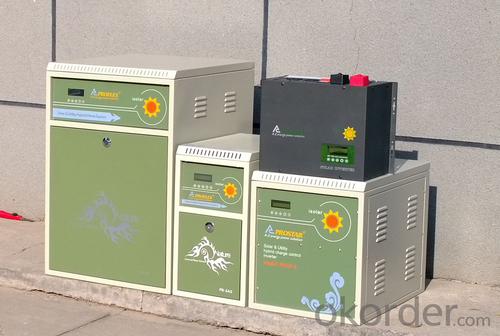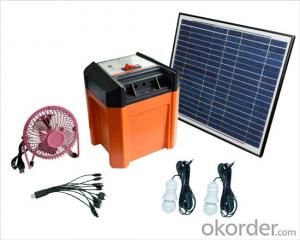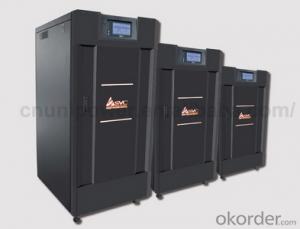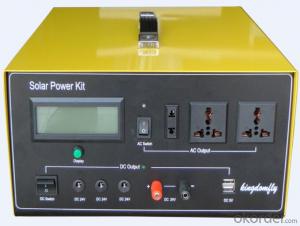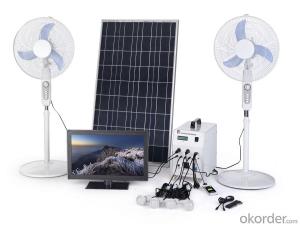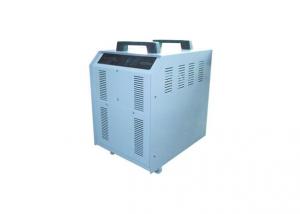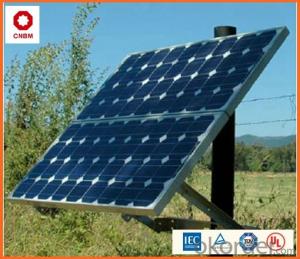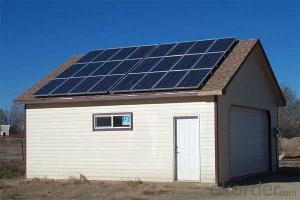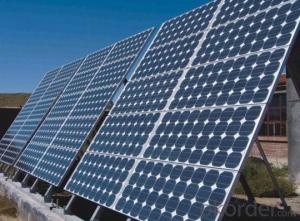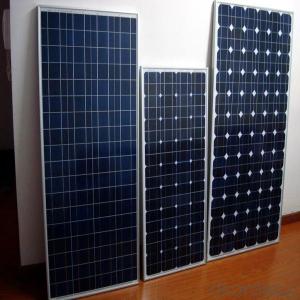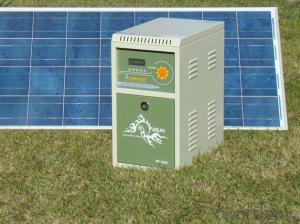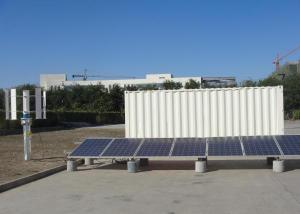150W Solar Panel Off Grid Sun Power System - Solar Energy Systems Canada
- Loading Port:
- Tianjin
- Payment Terms:
- TT OR LC
- Min Order Qty:
- 10 unit
- Supply Capability:
- 10000 unit/month
OKorder Service Pledge
OKorder Financial Service
You Might Also Like
Specification
AC solar power system consists of solar batteries, solar controller, battery, inverter components.
Used to solve rural or remote areas without electricity, such as highland, island, pastoral, villas, border posts and other military and civilian life electricity.
Daily use reference
TV 70W x 4 hours
Lighting 30W x 6 hours
Fan 50W x 6 hours
Laptop 60W x 2 hours
Total loading power: 210W
Total power consumption per day: 880Wh (0.88kWh/day)
Warranty
provides a 1~3 year limited warranty (“Warranty”) against defects in materials and workmanship for its Uninterruptible power supply, Power inverter/chargers, Solar charge controllers, Battery Products (“Product”).
The term of this Warranty begins on the Product(s) initial purchase date, or the date of receipt of the Product(s) by the end user, whichever is later. This must be indicated on the invoice, bill of sale, and/or warranty registration card submitted to us. This Warranty applies to the original MUST-Solar Product purchaser, and is transferable only if the Product remains installed in the original use location.
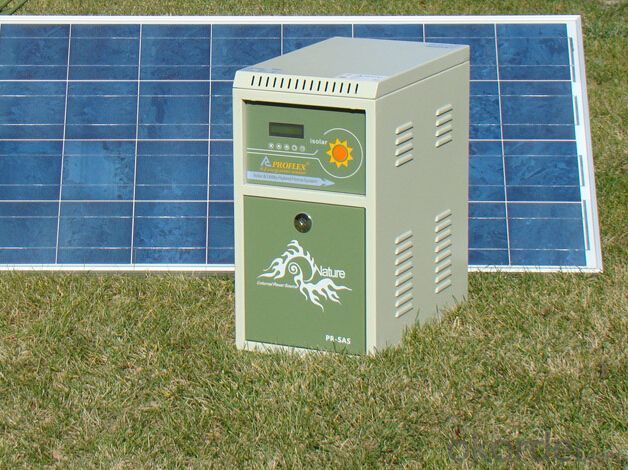
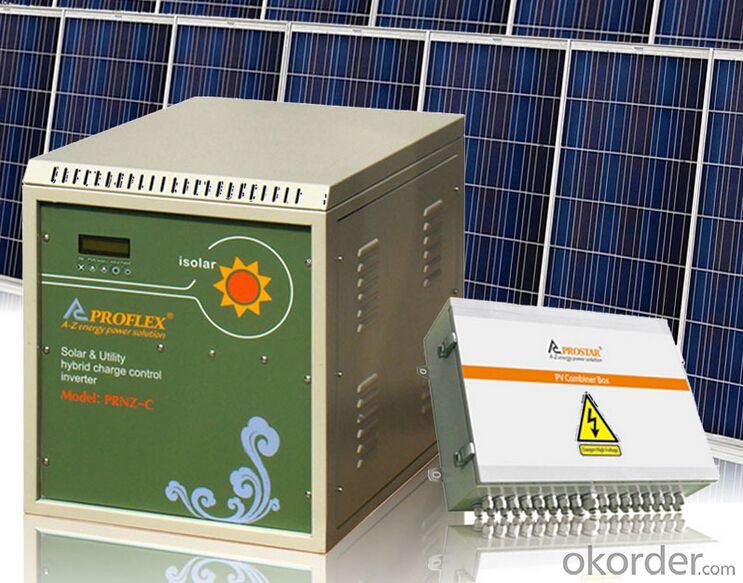
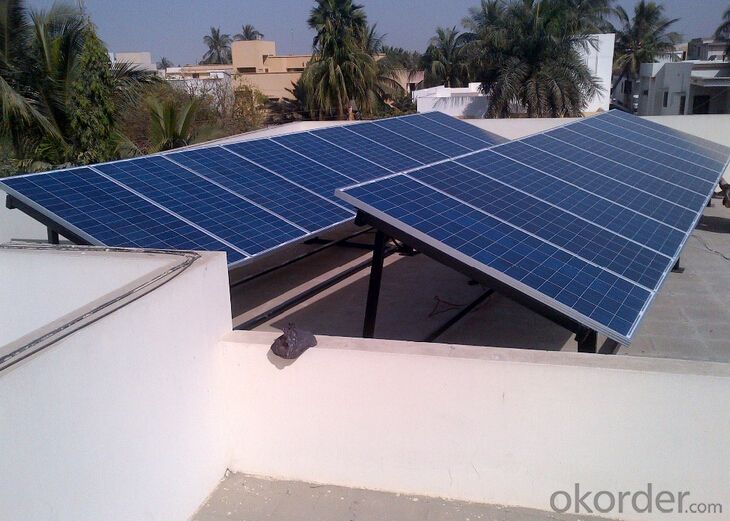
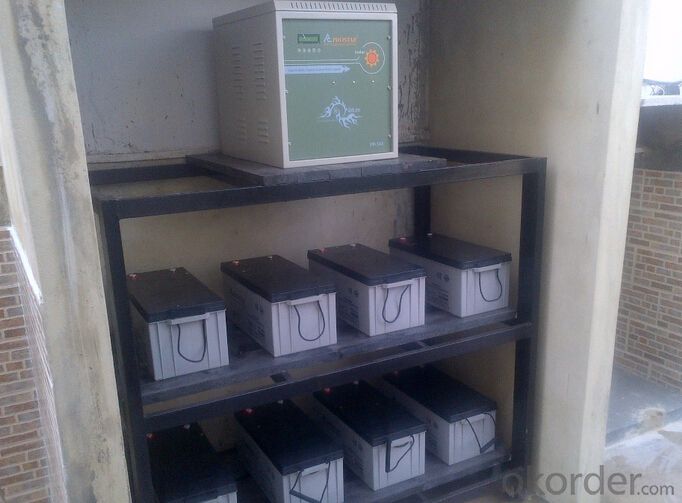
off grid sun power system
| Design Backup Time 5-6Hrs | |||
| Solar Module | Maximum power at STC(pm) | 150W solar panel(polycrystalline) 2pcs 75W,2pcs parallel | |
| Max.system charging voltage | 17.6V | ||
| Max.system charging current | 8.54A | ||
| Inverter | Output waveform | High frequency pure sine wave | |
| Continuous output power | 300W | ||
| Output voltage/frequency | 220V/50HZ | ||
| Charge controller | Syetem voltage | 12V | |
| Rated discharge current | 15A | ||
| Cabinet | Material | Steel box of zinc-plated and laquer-coated | |
| Battery | Type | Deep cycle | |
| System voltage | 12V | ||
| capacity | 1pcs 12V 100Ah | ||
| operating temperature | -20℃-+55℃ | ||
| Packing(CBM/KG) | Solar panel | 0.06CBM/20KGS | |
| Control box | 0.11CBM/21KGS | ||
| Battery | 0.02CBM/22KGS | ||
| Whole system | 0.19CBM/23KGS | ||
| Daily use reference | |||
| Name of load | Power | Working hours | Consumption |
| TV | 70W | 4hours | 280Wh |
| LAPTOP | 60W | 2hours | 120Wh |
| LIGHTING | 30W | 6hours | 180Wh |
| FAN | 50W | 6hours | 300Wh |
| TOTAL | 210W | 880Wh | |
FAQ
1. How do I decide which system is right for me ?
For protection from long outages, include a generator or solar panels in your Must solar system. Shorter outages can be handled by a battery-only system.
2. Where my system will be installed ?
Must solar systems are usually wall-mounted near a home's main electrical (circuit breaker) panel.
3. How do I install my system ?
A solar backup inverter is connected to a home electric system , we will supply detailed installation manual and videos for our customers .

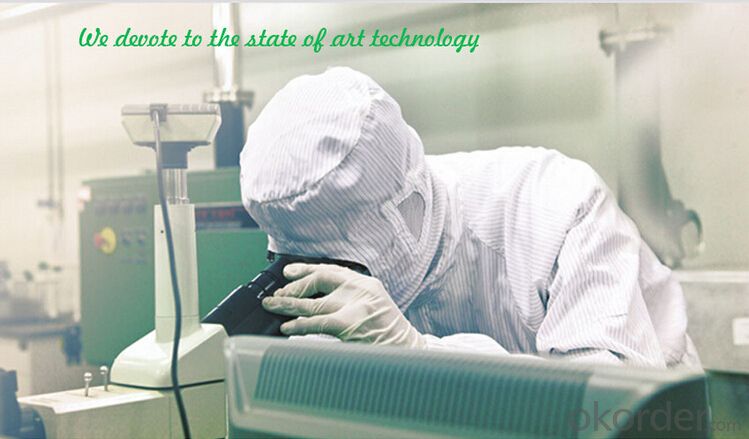
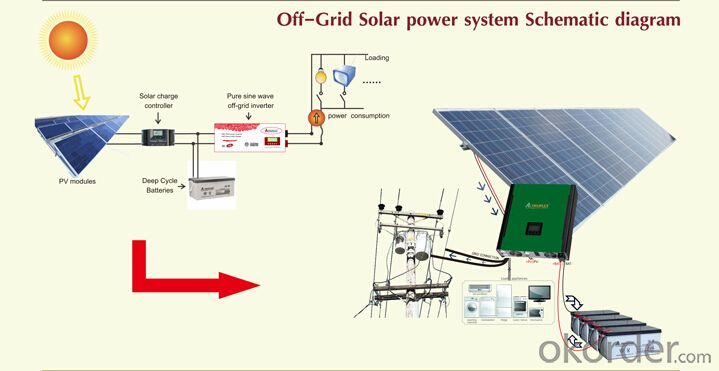
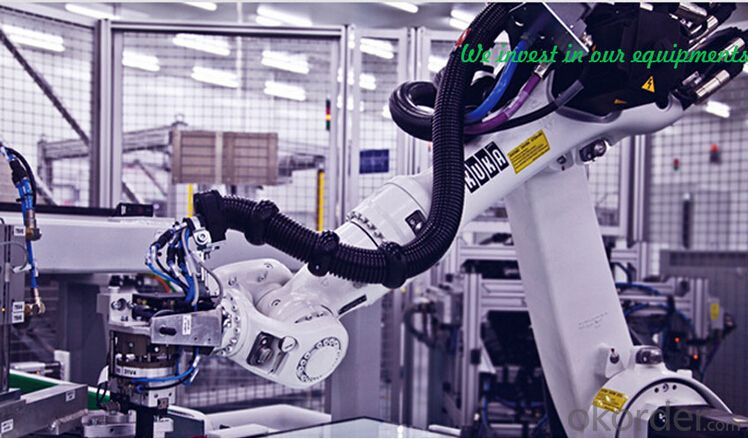

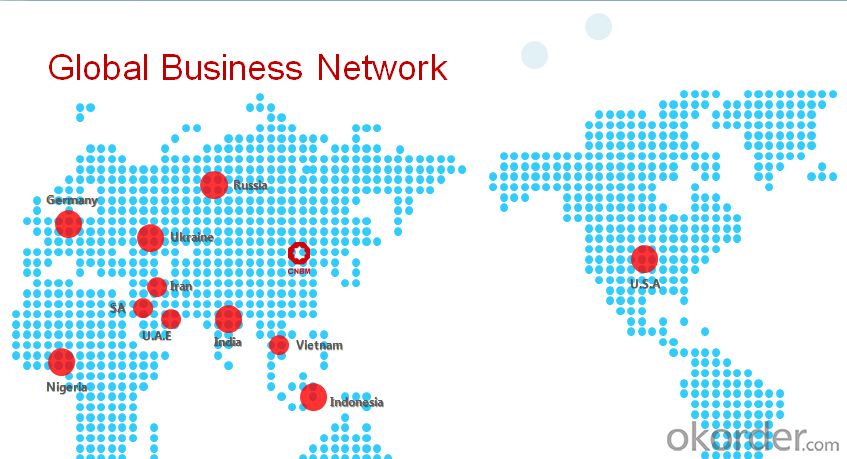
- Q: Can solar energy systems be used in areas with limited construction materials?
- Yes, solar energy systems can be used in areas with limited construction materials. Solar energy systems can be designed to be simple and require minimal construction materials. For example, small-scale solar systems like solar panels or solar lanterns can be easily installed and used in remote areas with limited resources. Additionally, innovative solutions like solar cookers or solar water heaters can also be implemented in areas with limited construction materials, providing clean and sustainable energy alternatives.
- Q: Can solar energy systems be leased or rented?
- Yes, solar energy systems can be leased or rented. Leasing or renting solar energy systems allows individuals or businesses to enjoy the benefits of solar power without the upfront costs of purchasing and installing the equipment. This option is becoming increasingly popular as it offers a more affordable and flexible way to access clean and renewable energy.
- Q: How does the performance of solar panels vary based on the altitude?
- Solar panel performance can be influenced by altitude due to various factors. One of the main factors is the amount of sunlight that reaches the panels. As altitude increases, the panels receive more direct sunlight because the atmosphere becomes thinner. This leads to enhanced efficiency and power output. Furthermore, solar panels tend to perform better at higher altitudes due to lower temperatures. Lower temperatures allow the panels to operate more efficiently, as excessive heat can reduce their efficiency. Thus, the cooler temperatures found at higher altitudes help maintain the panels' optimal operating temperature, resulting in improved performance. However, altitude can also have negative effects on solar panel performance. Higher altitudes may experience increased snowfall or ice formation, which can obstruct sunlight and decrease panel efficiency. Additionally, extreme weather conditions like high winds or hailstorms, which are more common at higher altitudes, can potentially damage the panels and impact their performance. It is important to consider that the impact of altitude on solar panel performance may vary depending on specific geographical locations and local climate conditions. Therefore, it is advisable to take these factors into account, seek expert guidance, or conduct thorough research when installing solar panels at different altitudes to maximize their performance.
- Q: How does solar energy impact job creation?
- Solar energy impacts job creation by creating a significant number of new employment opportunities. The growing demand for solar installations and maintenance has led to the creation of jobs in manufacturing, installation, sales, and research and development sectors. Additionally, the renewable nature of solar energy ensures long-term job stability, contributing to a sustainable and green economy.
- Q: What is the impact of shade from nearby buildings or trees on the performance of solar panels?
- The impact of shade from nearby buildings or trees on the performance of solar panels is significant. When solar panels are shaded, even partially, their ability to generate electricity is greatly reduced. Shade causes a decrease in the amount of sunlight that reaches the panels, thereby reducing their efficiency. Shade on solar panels can result in a phenomenon known as "panel mismatch." This occurs when some parts of the panel receive sunlight while others are in shade. As a result, the shaded cells produce less electricity than the unshaded cells, leading to a drop in overall panel performance. The shaded cells can also become a source of resistance, causing the other cells to work harder to compensate and potentially leading to hotspots or damage. Furthermore, shade can cause a disruption in the electrical flow within the panels, which can negatively impact the entire solar power system. In the case of series-connected panels, if even one cell is shaded, it can significantly reduce the output of the entire array. This can result in a substantial loss of power generation and significantly affect the return on investment and payback period of the solar panel system. It is crucial to consider the shading factor when designing and installing solar panels. Shading analysis should be conducted to determine the potential areas of shade throughout the day and year. By avoiding or mitigating shading, the performance and efficiency of the solar panels can be optimized. Various measures can be taken to address shading issues. These include adjusting the tilt and orientation of the panels, trimming or removing nearby trees, or using technologies like micro-inverters or power optimizers that minimize the impact of shade on the overall system. In conclusion, the impact of shade from nearby buildings or trees on the performance of solar panels is significant and can greatly reduce their efficiency and power generation. It is crucial to consider shading factors during the design and installation process to optimize the performance and maximize the benefits of solar energy.
- Q: Is it possible to store excess electricity generated by a solar energy system?
- Yes, it is possible to store excess electricity generated by a solar energy system. This can be achieved through the use of batteries or other energy storage systems.
- Q: Can solar energy systems be used in powering electric fences or security systems?
- Yes, solar energy systems can be used to power electric fences or security systems. Solar panels can convert sunlight into electricity, which can then be stored in batteries and used to power these systems. This provides a reliable and sustainable source of energy, especially in remote areas where access to conventional power sources may be limited. Additionally, solar-powered systems are cost-effective and environmentally friendly, making them an ideal choice for powering electric fences and security systems.
- Q: How do solar energy systems impact the reliability of the electrical grid?
- Solar energy systems can enhance the reliability of the electrical grid by providing a decentralized and diversified source of power. Solar energy systems generate electricity closer to the point of consumption, reducing transmission and distribution losses. Additionally, solar systems can operate independently during power outages, reducing the impact of blackouts and enhancing grid resilience.
- Q: Can solar energy systems be used in areas with limited access to maintenance services?
- Yes, solar energy systems can be used in areas with limited access to maintenance services. Solar panels are highly durable and require minimal maintenance. They have no moving parts that can break down easily and need occasional cleaning to remove dust or debris. Additionally, advancements in solar technology have made systems more reliable and resistant to harsh environmental conditions. With proper installation and occasional cleaning, solar energy systems can operate efficiently for many years, making them suitable for areas with limited maintenance services.
- Q: Can solar energy systems be used in areas with limited access to solar energy advocacy campaigns?
- Yes, solar energy systems can still be used in areas with limited access to solar energy advocacy campaigns. While advocacy campaigns can help raise awareness and promote the benefits of solar energy, the actual implementation of solar systems depends on the availability of sunlight and technical feasibility. Even without active advocacy campaigns, solar energy can still be a viable and sustainable solution in areas with limited access to conventional energy sources.
Send your message to us
150W Solar Panel Off Grid Sun Power System - Solar Energy Systems Canada
- Loading Port:
- Tianjin
- Payment Terms:
- TT OR LC
- Min Order Qty:
- 10 unit
- Supply Capability:
- 10000 unit/month
OKorder Service Pledge
OKorder Financial Service
Similar products
Hot products
Hot Searches
Related keywords
